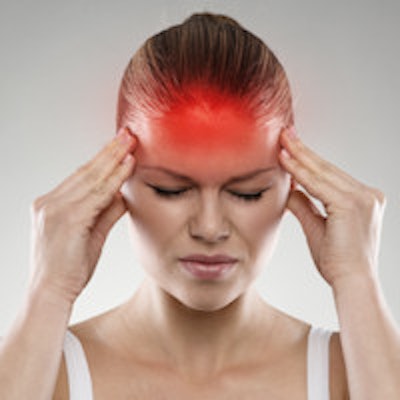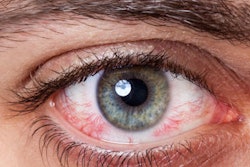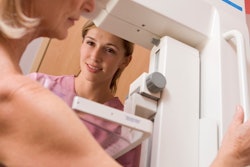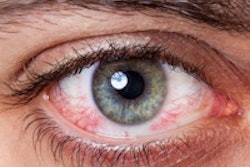
How long radiographers work in an MRI suite could influence how often they are prone to symptoms such as dizziness or headaches, according to a U.K. study in the September issue of European Radiology. The study could affect the ongoing debate over the health effects of occupational exposure to powerful magnetic fields.
A poll of radiographers and imaging staff from eight National Health Service (NHS) MRI departments in the U.K. found the prevalence of MRI-related symptoms were associated with shift length and the number of hours per week working with MRI. Researchers led by Frank De Vocht, PhD, from the University of Bristol in the U.K., however, found no correlation found between the mild maladies and the staff's exposure to either 1.5-tesla or 3-tesla magnet strength (Eur Radiol, September 2015, Vol. 25: 9, pp. 2718-2726).
Occupational effects of MRI
While MRI advocates extol the safety of the nonionizing imaging modality, they also caution there can be risk, such as burns and peripheral nerve stimulation, if scanners are not operated properly. Thus, a litany of safety steps and requirements are in place so patients and staff can avoid danger.
Previous observational studies have reported more mild adverse effects, such as disorientation and memory loss, from being in close proximity to an MRI scanner for an extended period of time. To further investigate the issue, researchers invited MRI departments at NHS sites in England, Wales, and Scotland to participate in the study. As each facility came on board, one of the researchers would visit the site for two to five consecutive days on a random date.
A total of 117 people participated in the study. Among the subjects were 104 people (88%) who worked regularly with MRI, and 13 individuals who served as controls and were never exposed to the MRI suite. The study cohort included 87 radiographers who worked with 1.5-tesla scanners and 17 individuals who handled 3-tesla systems. They had worked with MRI for an average of eight years, ranging from one to 23 years. There were 82 women (70%) among the participants, with an average age of 40, ranging from 23 to 65, for all subjects.
Researchers also gathered information about the participants' occupational, personal, and medical history, as well as the prevalence of any subjective symptoms in a questionnaire. They also asked participants to keep a diary of all procedures that required access to the MRI suite, when they worked, and incidence of symptoms during their shift.
Researchers had a dosimeter to measure any exposure to the static and movement-induced time-varying magnetic fields during the particular shift. The average static magnetic exposure (SMF) exposure per shift was measured as approximately 30 mT, and motion-induced time-varying magnetic fields (TVMF) was measured as approximately 54 mT/s.
The researchers then gave respondents a baseline questionnaire that asked them the kinds of symptoms, if any they may have experienced working near the scanner. Symptoms attributed to working in the MRI suite included nausea, memory loss, drowsiness, headaches, metallic taste, dizziness/vertigo, problems concentrating, head ringing, sleep disorder, or an illusion of movement.
The researchers also asked respondents to describe any symptoms they experienced in the past month that weren't typically associated with MRI exposure, which the group called the "reference symptoms." These symptoms were derived from the Lund subjective health complaint inventory (SHC) questionnaire, and included queries such as when the symptoms occurred, and their severity (based on a four-point scale, with 0 as none and 3 as severe) to see how radiographers compared with the general public. The SHC survey included ailments such as a cold or flu, coughing, neck pain, back pain, anxiety, heartburn, allergies, chest pain, and heat flushes, as well as previously mentioned MRI-related symptoms.
Self-reported symptoms
In tabulating survey results, de Vocht and colleagues found that 53% of participants reported at least one symptom that respondents specifically cited as MRI-related, while 74% of the subjects reported having at least one of the reference symptoms from the SHC list within the previous month.
MRI-related symptoms were reported during 4% of the shifts with ailments, such as "dizzy feeling for 30 seconds," "slightly dizzy, but busy," "slight headache," "very mild headache," and "eye strain/dizzy." The symptoms occurred at various times, including the cleaning of the magnet bore, patient positioning, and when injecting the contrast agent. Researchers noted that because of the low incidence of these symptoms, they did not conduct any further statistical analyses.
Time spent inside the MRI suite also correlated to the number of self-reported MRI-related symptoms. The duration of a radiographer's shift was the most significant factor (OR = 1.34), followed by the average hours per week worked with an MRI (OR = 1.06), and the number of times the person entered the MRI suite during his or her shift (OR = 1.03).
Researchers also conducted a multivariate analysis that adjusted for factors such as age, stress, and susceptibility to motion sickness, and again found that average shift duration was a predictor of MRI-related symptoms (OR = 5.64), but not reference symptoms (OR = 1.01). The average hours working with MRI during the week also increased the risk of additional MRI-related symptoms (OR = 1.51), but not reference symptoms (OR = 1.01). Perceived stress by radiographers also was associated with MRI-related symptoms (OR = 1.17).
"Given the type of symptoms this does make sense," the authors wrote. "But surprisingly, this is not observed for the reference symptoms (OR = 0.97), leaving open the question whether there is some other factor correlated to working with MRI, but unobserved in this study that could explain this association."
The study also found no increase in MRI-related symptoms related to 1.5-tesla or 3-tesla magnet strengths of the scanners, nor average or peak exposure to the static magnetic exposure or time-varying magnetic fields. This finding contradicts previous studies. Researchers explained the discrepancy by stating the variation in field-strength exposure in this study was "not large enough," given that the staff was working with 1.5-tesla and/or 3-tesla scanners, while past research included magnet strengths as great as 7-tesla.
Radiographers also had an eightfold increased risk of MRI-attributed symptoms (OR = 8.05), compared with nurses and assistants, who reported a two- to threefold increased risk, although not statistically significant compared with clinicians, according to the study.
In a comparison of the reference symptoms among radiographers, staff, and the general public based on SHC survey, the healthcare professionals experienced fewer maladies. The most statistically significant differences were far fewer cases of headache, cold or flu, neck pain, lower back pain, heartburn, allergies, and chest pain among radiographers and staff compared with the public.
"Our results further suggest that in our survey, reporting of these specific symptoms is primarily related to duration of work with MRI systems and not to the strength of the systems or the shift-average magnetic field exposure, indicating that shift duration and perceived stress not related to the MRI system were important contributing factors," the authors concluded.
De Vocht and colleagues cited several limitations, including the relatively small sample size of 104 participants, which "prohibited more sophisticated analyses, such as investigation of clustering of symptoms within sites." The authors also noted a lack of a control group, such as CT radiographers.



















